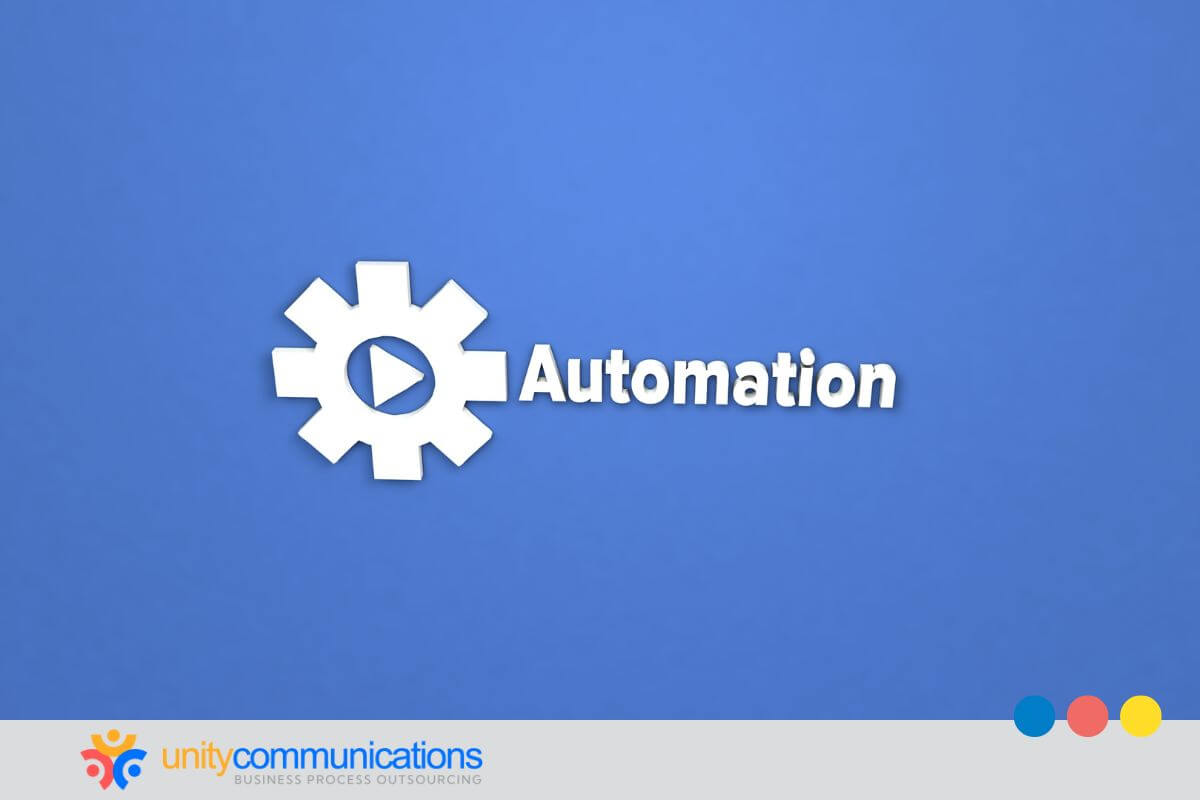Table of Contents
As companies seek cost-effective processes for success, the competition among business process outsourcing (BPO) vendors toughens. Third-party firms vying for investments innovate to provide unique products or services at competitive pricing.
However, distinctive offerings and affordable rates are insufficient if supported by poor and unstructured management. Clients might question BPO companies’ ability to handle non-core business processes and invest elsewhere.
For your BPO firm to stay on top of the market, you must implement strategic decision-making and ensure flawless service delivery. Find out how through this article.
Stages of BPO strategic decision-making and management

Running a BPO organization requires robust strategic planning and decision-making to maintain consistent service quality and competitive advantage. Well-structured business process management minimizes stress and allows your workforce to collaborate toward short- and long-term goals.
Without strategic decisions, significant bottlenecks, wasted resources, and low revenue streams await. A Decision Design report reveals that companies risk losing 40% of revenue because of poor decision-making.
Save your BPO company from such pitfalls by implementing these stages of strategic decision-making:
Conduct situation analysis
Understanding your BPO firm’s performance is the first step in making informed decisions. Situation analysis thoroughly examines internal and external factors that affect how you deliver support and maintain high-quality service.
Since every requirement and client need is unique, your decision-making framework also varies. Whether you want to prioritize inclusivity or efficiency, apply these different approaches based on the strategic objectives of your situation analysis:
| Decision-making framework | Definition | Use cases |
|---|---|---|
| SWOT analysis | Specifies strengths, weaknesses, opportunities, and threats to the enterprise | A BPO firm wants to broaden its offerings from customer service to information technology (IT) support. Conducting this analysis enables it to identify its: Strength. Most agents are skilled in IT and effective communications. Weakness. The provider needs more equipment to provide IT services. Opportunities. The market is experiencing increasing demand for IT support due to the growth of remote work. Threats. The demand also boosts the market competition. The results help the provider decide how to maximize its strengths, address weaknesses and threats, and capitalize on opportunities. |
| PESTLE analysis | Identifies the political, economic, sociological, technological, legal, and environmental events that influence decision-making | A U.S.-based BPO company plans to enter the Southeast Asian market. The technique examines whether its business strategies match these factors: regulations and trade policies, currencies and exchange rates, cultural differences and workforce skills, tech innovations, compliance laws, and environmental sustainability practices. |
| Porter’s five forces | Determines competitors, new market entrants, customers, products, and services to inform techniques and gain a competitive edge | A back-office support vendor evaluates the competitive landscape for its data entry services. This analysis model allows it to identify barriers to entry, availability of skilled labor, client negotiation power, risks and opportunities of using automation, and competitor movements. The findings help the vendor understand its position in the market and develop efforts to remain competitive. |
| OODA loop | Introduces a four-point cycle for quick and proactive decision-making: observe, orient, decide, and act | During a client’s call center emergency, this is what a BPO firm does using this strategic decision-making framework: It monitors and understands client issues that lead to customer service disruptions. It also determines and creates solutions to address response delays. Additionally, the BPO company implements the best course of action, such as deploying chatbots to automate inquiry responses. |
| Multi-vote framework | Allows participants to vote for the best option when making collective decisions to enhance existing efforts or implement new initiatives | A BPO contact center has received several projects from new clients but needs more human resources (HR) due to the pandemic. This approach enables the provider to categorize the projects based on their urgency, complexity, and work setup. The business can also run digital polls or surveys to let employees choose tasks and schedules based on work arrangements. Additionally, it can prioritize the most popular projects. |
| Cost-benefit analysis | Compares estimated expenses against the potential benefits of a project | A BPO call center plans to invest in artificial intelligence (AI) to boost customer support. This method assists in calculating the total costs of AI implementation by comparing them to the total value of expected benefits. It also checks whether the provider can offer services at a much lower fee to attract more clients. |
| SMART goal-setting | Helps set specific, measurable, achievable, relevant, and time-bound objectives when making strategic business decisions | A customer service provider aims to enhance customer satisfaction scores, which have declined over the past few quarters due to delayed services. The SMART model guides the BPO firm’s strategic decision-making when creating an actionable plan: Specific. Implement an upgraded omnichannel system to speed up inquiry responses. Measurable. Achieve an average response time of less than five minutes or within an hour. Achievable. Schedule a session to train customer agents to use the platform for faster responses. Relevant. The upgraded system supports the enhancement of customer service quality. Time-bound. Complete the upgrade and see the expected outcomes within three months. |
Select and implement the best action
After performing a situation analysis, select and implement the best action to enhance your BPO company’s management strategies. Align the chosen effort with your enterprise and client goals.
The action plan should be feasible and deliver your desired outcomes. Check these practical ways to choose the right BPO management approach:
- Set criteria for assessing potential actions. Examples include cost-effectiveness, service impact, feasibility, and compliance.
- Hold brainstorming sessions, situation analyses, case studies, surveys, and consultations with key stakeholders to map each option’s possible outcomes.
- Pick the best option that stakeholders approve and match your overall business targets.
- Create an action plan that details the specific steps, timelines, responsibilities, and expected management milestones.
- Perform a pilot test in a controlled environment or with a specific unit to assess the plan’s effectiveness and identify areas of improvement.
- Develop communication strategies, training programs, transition plans, and knowledge bases before diving into full-scale implementation.
Monitor and update decision-making strategies
According to McKinsey’s latest research, inefficient decision-making costs a typical Fortune 500 company 530,000 days of managers’ time yearly or about $250 million in annual wages. The report also noted that executives experience decision fatigue as they struggle to decide for their teams and organizations.
Avoid wasting time, effort, and money by continuously monitoring and updating your BPO strategic decision-making strategies. Establish key performance indicators (KPIs) and schedule regular audits to measure the efficacy of your decisions when managing your BPO company.
Adjust the decision-making approach based on in-house and market demands. Align it with your core competencies, values, client satisfaction, and employee retention goals.
Automation’s impact on BPO strategic decision-making

The effectiveness of automating decision-making depends on an effort’s type, urgency, and relevance. Based on predefined rules, AI-powered systems help collect, analyze, and interpret data more quickly and consistently.
Although automated platforms such as IBM Watson and Microsoft Power BI help reduce labor costs, humans are vital in ensuring data accuracy and reliability. They possess the contextual understanding and nuanced judgment these systems lack when dealing with complex situations.
For instance, a BPO call center uses AI-powered chatbots as a strategic decision-making tool when handling massive customer inquiries. These advanced solutions give agents various responses from which to choose. They just need to input correct prompts to quickly generate the best resolutions to common challenges.
The bottom line

Amid the dynamic BPO market, developing and implementing a strategic decision-making process optimizes operations and maintains your competitive advantage. It boosts workforce efficiency, client satisfaction, and upward growth.
Employing key frameworks and techniques can help you smoothly address complexities, maintain good customer relationships, and seize opportunities. Combining automation with human intelligence also helps streamline processes.
Let’s connect to discuss cost-effective ways to make informed decisions. Let’s work together to continuously learn, adapt, and improve products and services.




